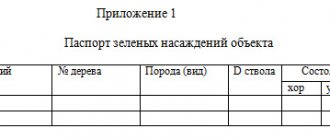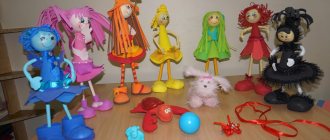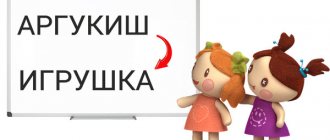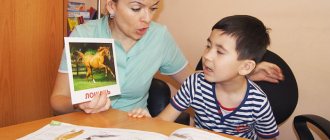ATTENTION RESEARCH METHODS FOR DIFFERENT AGES AND THEIR
Methods for studying attention. • Study of attention span. The device used for this purpose is called a tachistoscope (from the Greek takhisto - fast, skopio - look). It usually consists of a window separated from the object in question by a falling screen, the slot of which can be arbitrarily changed, so that the object in question appears for a very short period of time from 10 to 50 -100 ms. Sometimes a flash is used to quickly expose an object, making it possible to view the object for a very short time (1 -5 ms). The number of clearly perceived objects is an indicator of the amount of attention. If the presented figures are quite simple and scattered in disorder across the demonstrated field, the amount of attention usually does not exceed 5-7 simultaneously clearly perceived objects. • Study of attention stability. To measure the stability of attention, Bourdon tables are usually used, consisting of a random alternation of individual letters, with each letter repeated the same number of times in each line. The subject is asked to cross out given letters for a long time (3, 5, 10 minutes) (in simple cases, one or two letters, in complex cases, a given letter only if it comes before another, for example a vowel). The experimenter notes the number of letters crossed out during each minute and the number of gaps detected. Fluctuations in attention are expressed in a decrease in work productivity and an increase in the number of absences. E. Kraepelin’s tables have a similar meaning, consisting of columns of numbers that the test subject must add for a long time. Work productivity and the number of errors made can serve as an indicator of fluctuations in attention. • Study of attention distribution. The study of attention distribution during long-term work is of great practical importance; For this purpose, the so-called “Schulte tables” are used. These tables give two rows of randomly scattered red and black numbers. The subject must point to a series of numbers in sequential order, alternating each time a red and black number, or, under complicated conditions, point to the red numbers in the forward order and the black ones in the reverse order. The ability to distribute your attention for a long time is expressed in a curve that marks the time spent finding each of the numbers included in both rows.
WHAT IS ATTENTION?
Attention is a certain psychological process, a person’s ability to concentrate on a necessary action. A child’s success at school largely depends on how well it is developed, so it is very important to start working in preschool age, to create conditions for involuntary attention to develop into a voluntary, volitional ability to concentrate. And the best thing parents can do is to develop the ability to concentrate through play.
The following characteristics of this process can be distinguished.
- Volume. That is, the amount of information that a child can retain in his mind.
- Concentration. A child’s ability to concentrate on something specific.
- Sustainability. The time period during which it is possible to maintain concentration.
- Distribution. The ability to divide attention into several simultaneously occurring processes.
- Switchability. The ability to quickly transfer concentration from one action to another.
The task of parents is to work with their children so productively that they form and develop all these characteristics.
Attention is one of the processes of the cognitive, that is, cognitive, sphere of a person - along with memory, thinking, perception and imagination. Without concentration, it is impossible to obtain new information in the required volume and remember it, so this process can be confidently called the first stage of cognition. Then, with the help of memory, a person accumulates acquired information. Only with the necessary level of attention will a child be able to learn cognitive processes such as reading, writing, and learning in the future.
Game activities for children of senior preschool age to develop attention
Valentina Zhitnikova
Game activities for children of senior preschool age to develop attention
Good afternoon, dear colleagues. I present to your attention a set of game activities for children in the preparatory group to develop attention .
This year I graduated from Moscow University named after S. Witte. The topic of my thesis was “The influence of play activities on the development of attention in children of senior preschool age .” I developed a set of gaming activities that I conducted 2 times a week. There were 16 classes in total .
Lesson 1.
-Meeting and greeting. Snowball game
(The first child says his name, passing the ball to another, and he, in turn, says the name of the first and his own, then the third participant receives the ball, etc.) The game is played in a circle.
— "Search non-stop"
(Within 10-15 seconds, you need to see around you as many objects of the same color as possible. The first participant, at the leader’s signal, begins to list, the others complement it.)
— “Complete the picture”
(a template is given on a sheet of paper in a box; you need to complete the second half)
.
-Game “What sounded?”
(The child is shown the sounds of different objects; then these objects sound behind a screen).
Lesson 2
-Game "Snowball"
.
— "Listen and perform"
(the presenter names several actions without showing them. Then the children must repeat these actions in the same sequence.)
— "Notice everything"
(Place 7-10 objects in a row and cover them. After opening them slightly for 10 seconds, close them again and invite the children to list all the objects.)
-Board game “Labyrinth”
(find each hare its own carrot)
.
Lesson 3
— Game "Snowball"
.
— "Buttons"
.
-Board game “Confusion”
.
-Working with a noisy picture (Find and list all the objects depicted. How can you call them in one word)
Lesson 4
-Game “Name + adjective”
(Children stand in a circle, the first player says his name and another adjective with the same letter: Katya is beautiful, Valera is cheerful)
-Game "Animals"
(The teacher names different words - the children must respond to some animal with a clap).
-Game with a plot picture.
-Game “Four Elements”
(The players sit in a circle. The presenter agrees with them: if he says
“earth”
, then everyone should lower their hands down, if the word
“water”
- stretch their arms forward, the word
“air”
- raise their hands up, the word
“fire”
- say rotation of the arms at the elbow joints.Whoever makes a mistake is considered a loser.
Lesson 5
-Game “Name + adjective”
.
-Game “Parallel counting of objects”
(In front of the children is a card with a picture of three objects. The child must move sequentially from object to object and count in this way: one flower, one pear, two balls, two pears)
— Game “Four Elements”
.
-Game-labyrinth “Which butterfly will fly to which flower”
(trace the flight of each butterfly)
Lesson 6
-Game "Beep"
.
-Game “Add a word”
(The first child names any toy, the second repeats the first and names his own, etc.)
-Game “Remember and Draw”
(Children are given cards with images of circles of different colors and diameters. They look at them for 1 minute. Then the cards are collected and given blank sheets with circle stencils and colored pencils).
— Game “Four Elements”
.
Lesson 7
— Game "Snowball"
.
-Game “Recognize by Voice”
(Children stand in a circle, a leader is selected. He stands in the center of the circle and
tries to recognize the children by their voice .)
-Exercise “Complete the Draw”
(A template is given, the task is to draw a window for each house, a twig for the apple, and a flower in the middle)
-Game "Sherlock Holmes"
(Sherlock Holmes is selected, he
carefully examines his partner and turns away. The partner changes something in his appearance and invites the detective to guess what he has changed.
Lesson 8
-Exercise “Beep”
(Children sit on chairs. The driver, with his eyes closed, sits on the laps of the children and guesses who he is sitting with. If he guessed right, the one who was named says
“Beep”
and becomes the driver.
-Game “Image of objects”
(The child uses facial expressions and gestures to depict the object, the other children guess it. Whoever names it first correctly becomes the driver.)
— "Pantomime for the Observant"
(The driver shows a pantomime, and the rest of the children must guess what this action means. First, you can start with simple actions, for example brushing your teeth, drinking tea or combing your hair, and then make it more complicated.)
— Game “Four Elements”
.
Lesson 9
-Game “Roll call-confusion”
(The teacher calls the first and last name of someone else, and when he says it correctly, the child must clap.)
-Game “Don’t miss a profession”
-Game “Recognize by Voice”
— Game “Name the neighbors”
(The players sit in a circle. The leader throws the ball and calls a number from 0-10. The one who catches it must name “neighbors, that is, numbers 1 less and 1 more.)
Lesson 10
-Game "Beep"
.
— "Pantomime for the Observant"
- “Notice everything”
-Board game “Labyrinth”
FORMATION OF ATTENTION
Psychologists distinguish 6 stages of attention development in children.
- Disseminated (from 0 to 1 year). Children can be distracted by any noise or new toy.
- Fixed (1-2 years). The kid, busy with his business, is so absorbed in it that he does not notice anything around him.
- Flexible single-channel (2-3 years). He may stop what he is doing when he hears an address to himself, but will return to it very quickly.
- Established single-channel (3-4 years). Children can switch from one process to another, interrupt their activities, and then return to them again.
- Two-channel short-term (4-5 years). The child gains the ability to do two things at the same time - for example, play and listen to what his mother tells him. If it is necessary to perform a complex action, he is able to concentrate on it.
- Emerging two-channel (5-6 years). Can do two things at the same time, which is why attention training should begin at this age.
Knowing these stages will help parents understand their child better.







